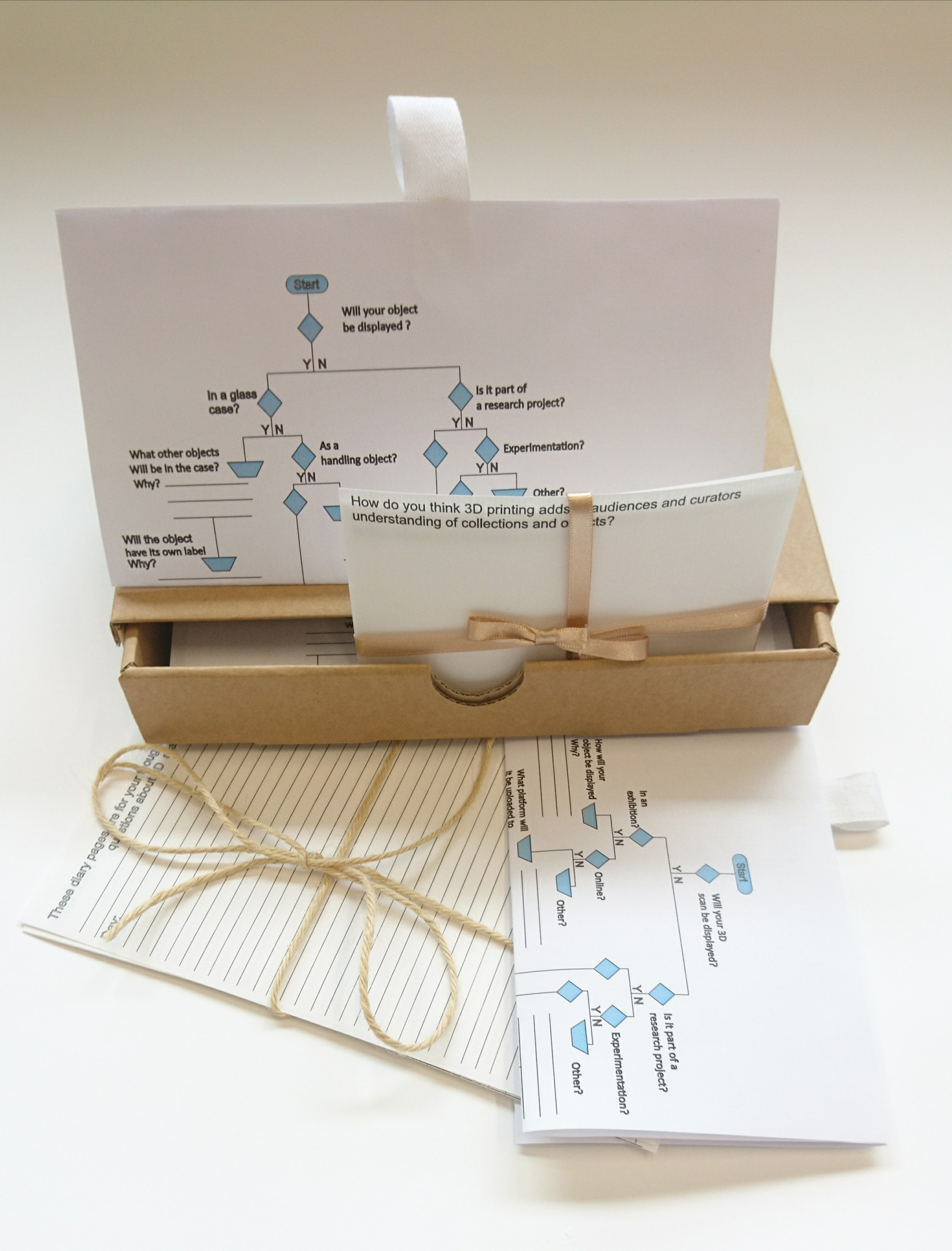The Curators Box was an experiment design method created to capture in depth curatorial perceptions of how and why 3D scanning and printing effects museum practice.
The Curators Box was designed a residency undertaken at The British Museum. The box contained a series of tasks that sought to ascertain curatorial perceptions relating to the integration of 3D technologies in museums. The interventions were evaluated and fed back to the corresponding curators. The evaluation of the interventions moves them away from the idea of design probes (Gaver, Dunne and Pacenti 1999), and situates each one as an extension of and exposition of the curatorial process.
The box was given to the curators during the 3-month residency at The British Museum. Below its an outline of the tasks the boxes contained.
- A flow chart, designed to show the curatorial intention
- A series of questions around how 3D printing is being used in the museum
- Diary pages
Curators added their own content – visualisations, metadata and notes – to the box, revealing the types of information they considered intrinsic to not only approaching and completing 3D digital projects, but documenting them as well. Such a method offers a new way of thinking about 3D digitisation. Spanning the realms of curation, design and artistic practice it revealed systems of hierarchical value, knowledge transformations and considerations around control and access. Embedded with this data set is drawings, critical diagrams, annotations and reflections on their own practice and that of the museum.

